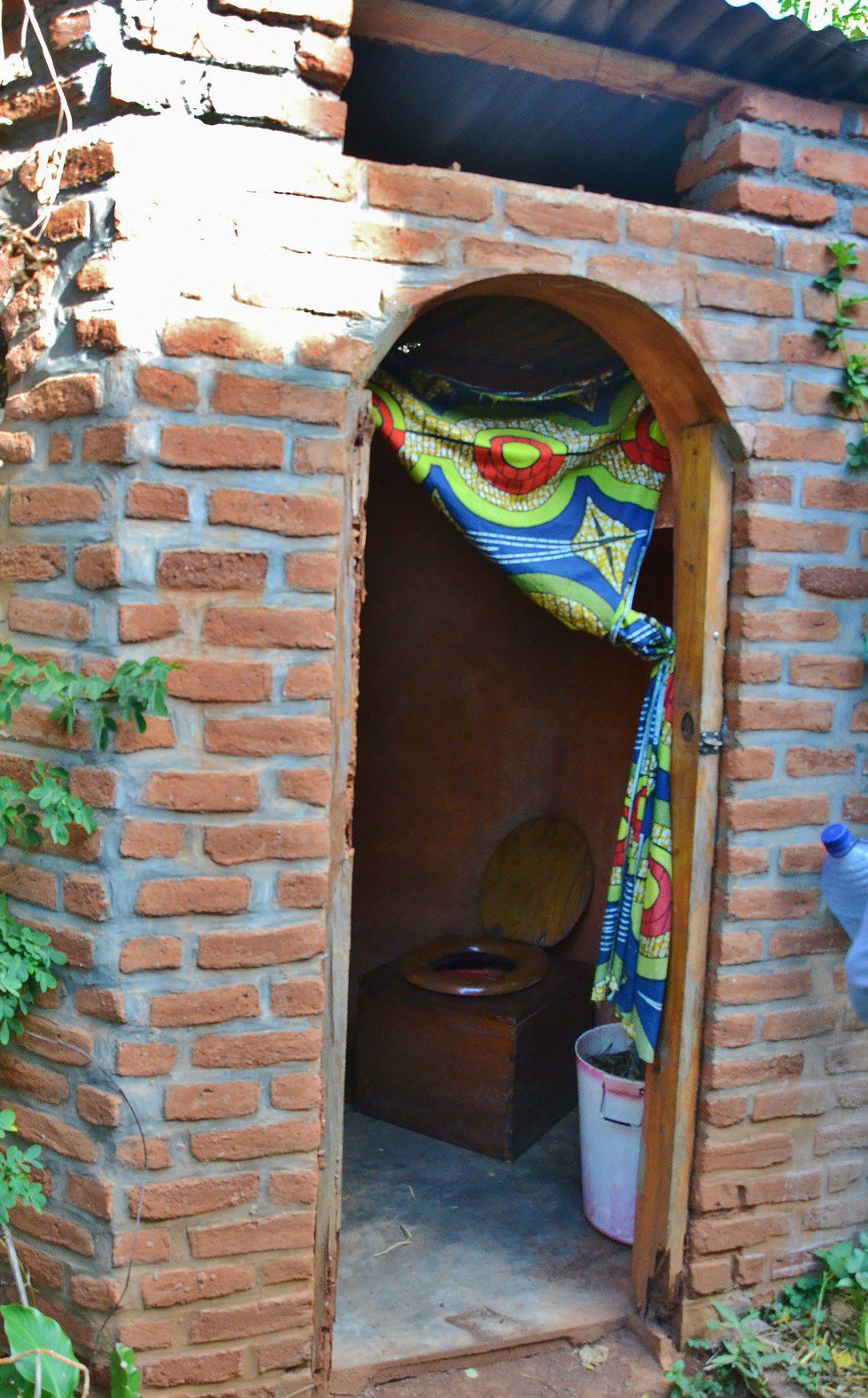Yeah, that's right, composting toilets...maybe the last thing I ever thought I would write about. However, I met a composting toilet that opened my eyes to the overwhelming benefits they offer. Here is a picture of the bathroom that inspired this article:
It was made, used, and explained to me by the Nordin family, two former Peace Corps volunteers and their daughter, who operate a permaculture demonstration farm in Malawi. There are many different models, so feel free to adjust it to fit your situation. This model uses a five-gallon bucket as the toilet bowl, encased in a wooden box (complete with a cute little toilet seat). Next to the toilet is another bucket filled with a mixture of soil, partially decomposed leaves, and small twigs. This is easily gathered through normal home care in the form of grass clippings, garden weeds, corn husks, raking, sawdust, etc. Out of sight are three large composting bins. The bins are open on the bottom to allow worm access, and one side is made of chicken wire to allow for aeration. By the time three bins have been filled, the first is usually fully composted, and can be emptied.
The process is fairly simple: after you finish using the toilet, simply take a scoop of organic matter and sprinkle it into the bucket. If you use recycled toilet paper, it can also go into the bucket. When your toilet is full, take it outside and dump in into a compost bin. Use a little water and biodegradable soap to rinse out the bucket – by pouring the water into the bin also, it will provide enough moisture for composting to occur. A lid is recommended for rainy climates as too much moisture isn’t good for composting either: a 50 percent moisture level is advised (damp but not dripping). Every so often, stirring or poking aeration holes into your compost pile is also necessary to keep the process going. You can even use it year-round, though the actual composting process will freeze during the winter and resume during the spring.
So you could make a composting toilet…by why bother?
1. They are cheap and easy to make.
Sick of waiting to pee while someone is brushing their teeth? Add an additional bathroom to your house without breaking the bank or dealing with contractors. The room or outhouse design is up to you, but for the toilet and bins all you need are some wood, wire, and 2-3 buckets.
2. They reduce water usage.
We are truly privileged if water is so plentiful that we feel justified in using anywhere from 1.3 to 7 GALLONS of water every time we use the bathroom. I don't know if you've heard, but parts of America are being hit with serious droughts and this excessive water use just isn't sustainable.
3. They are odor-free.
Unlike the sickening wave of smell emanating from a Port-a-Potty, composting toilets are quite pleasant. Bad smells are completely eliminated by covering your toilet with that small layer of organic matter after each use. They won’t attract flies, either.
4. They turn something *crappy* into something productive.
Coming from a country that generates an enormous amount of waste, this one is huge. Human waste, if properly composted, is safe to use as fertilizer in flower beds and even vegetable gardens. (That said, I’m pretty sure you can’t sell it.)
5. They are portable.
Composting toilets don’t require any plumbing or electricity, which means you can make one practically anywhere, and even move it if you want. Bonus: They never get clogged, either.
6. They reduce water pollution.
Because composting toilets don’t use a water system, there is no need to treat the water with harmful chemicals. Additionally, since your new fertilizer will be chemical-free, your water table and any run-off from your garden into local rivers or ponds is completely safe.
7. They never break.
Never say never, but at least if a bucket cracks you don’t have to pay a plumber to fix it.
8. The shower won’t go cold when you flush.
Your life is changing for the better, my friend!
Whether it's a house, cabin or RV that you're thinking of, composting toilets might just be the answer. I hope you're inspired to do some research, try it out, or at least think more critically about the things we take for granted every day!
For more composting basics, click here.
Specific instructions on constructing a toilet can be found here.
To learn more about the Nadin family and their work in Malawi, visit their website here.



















